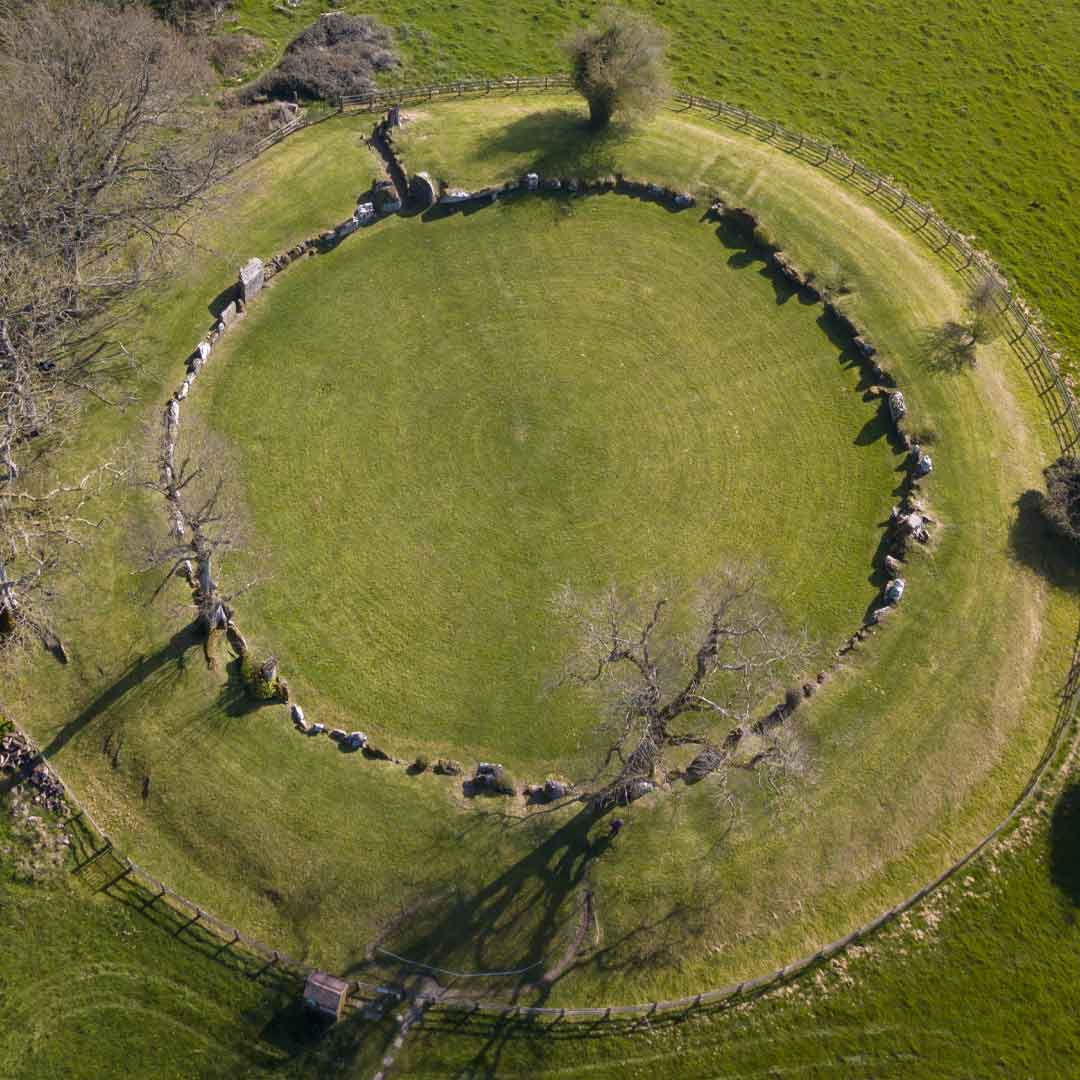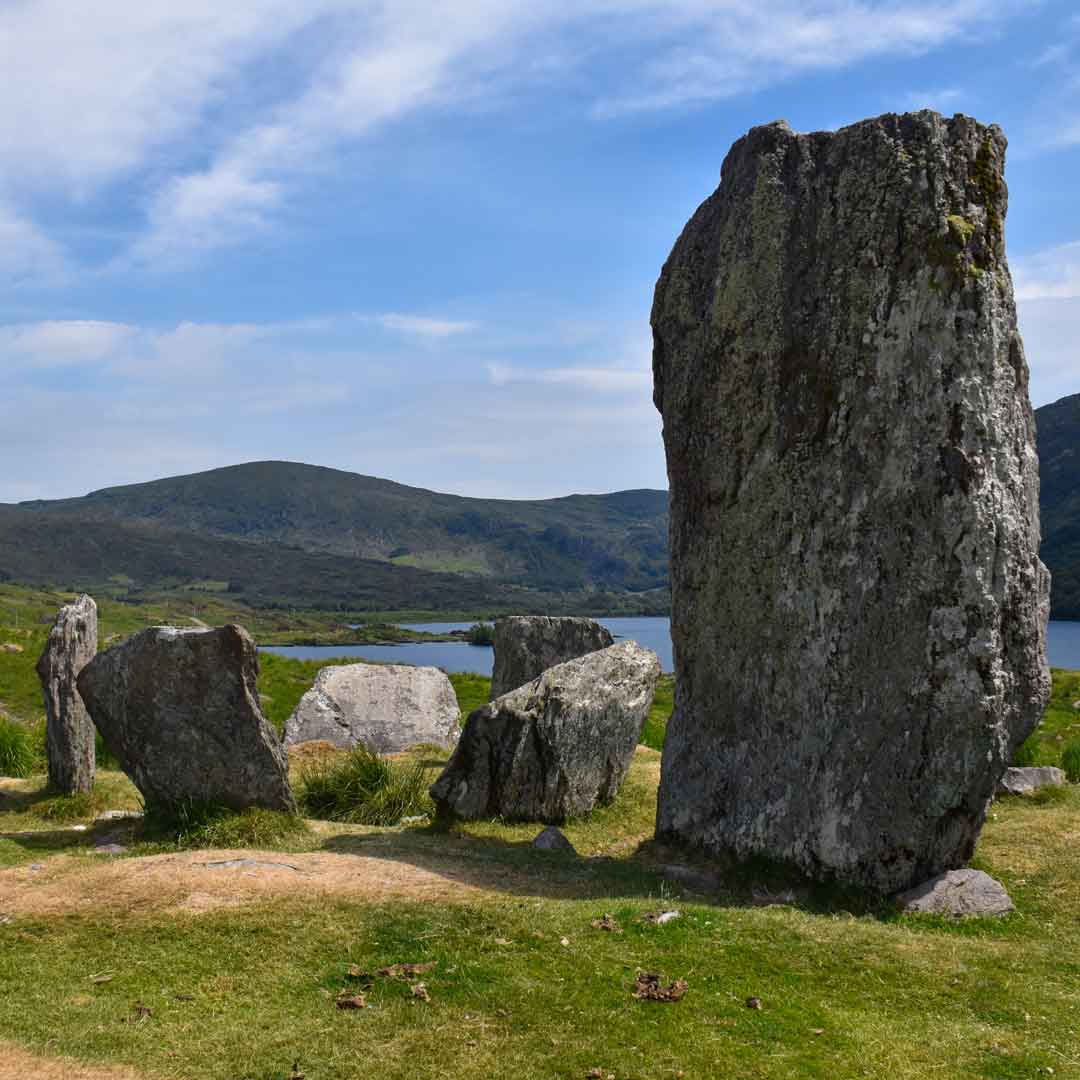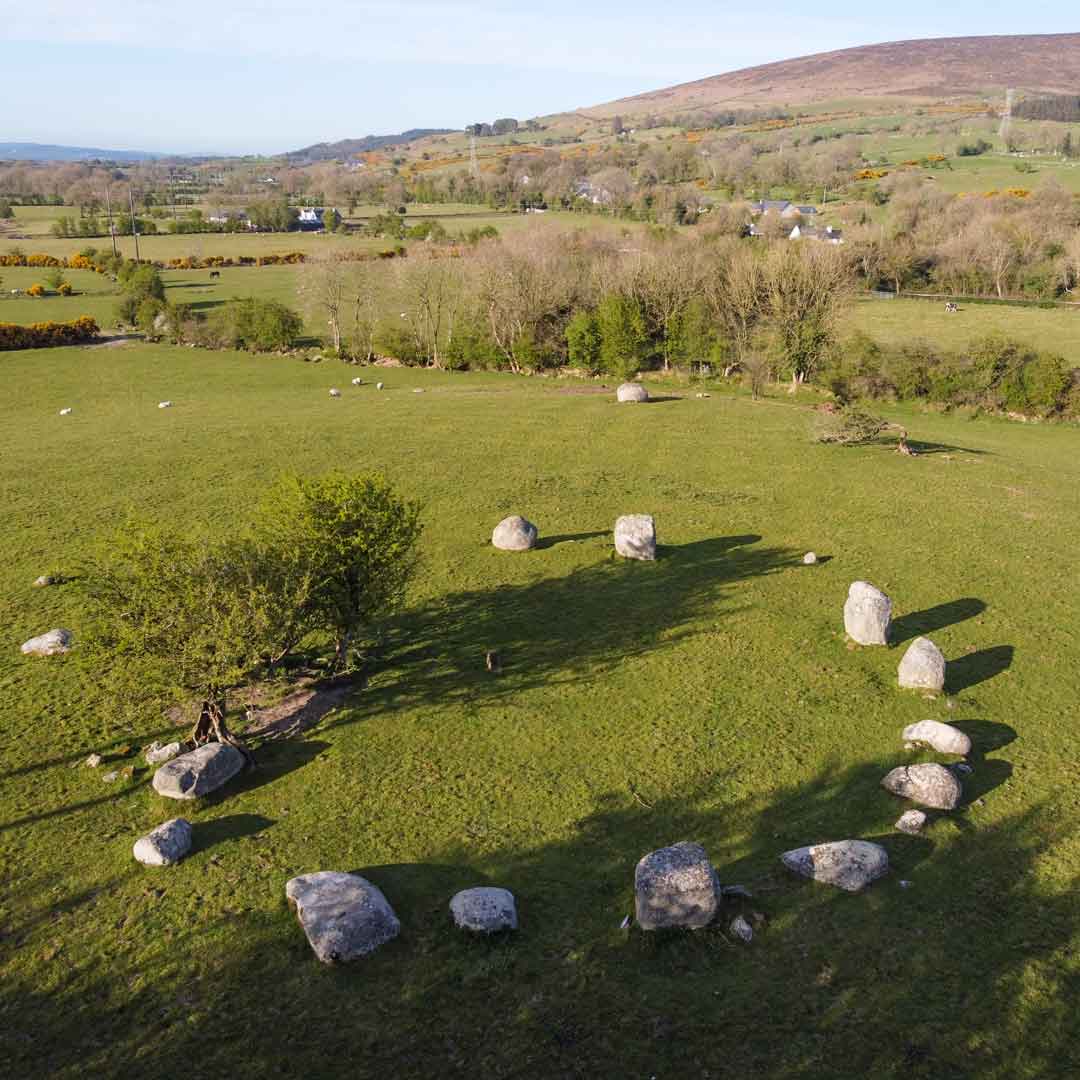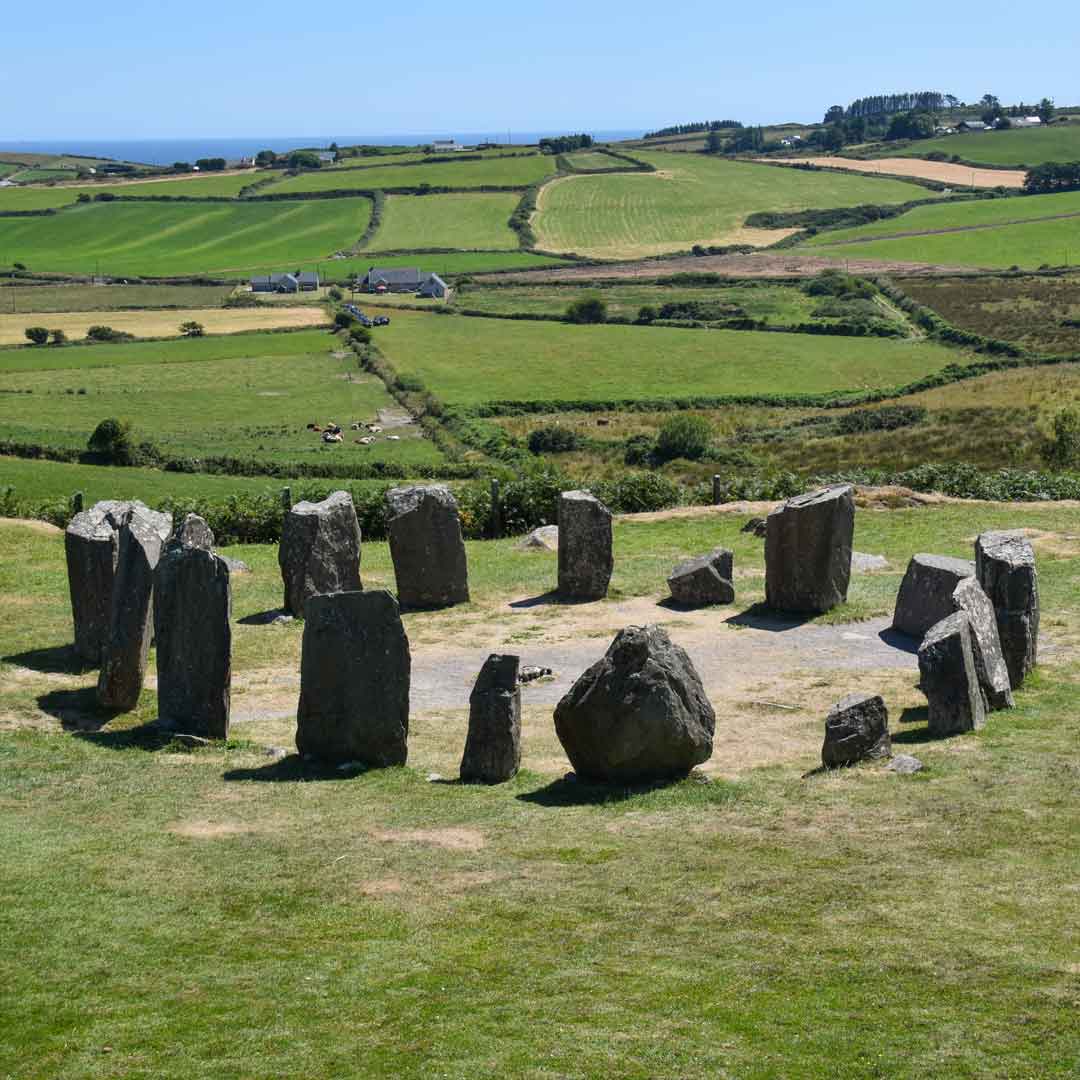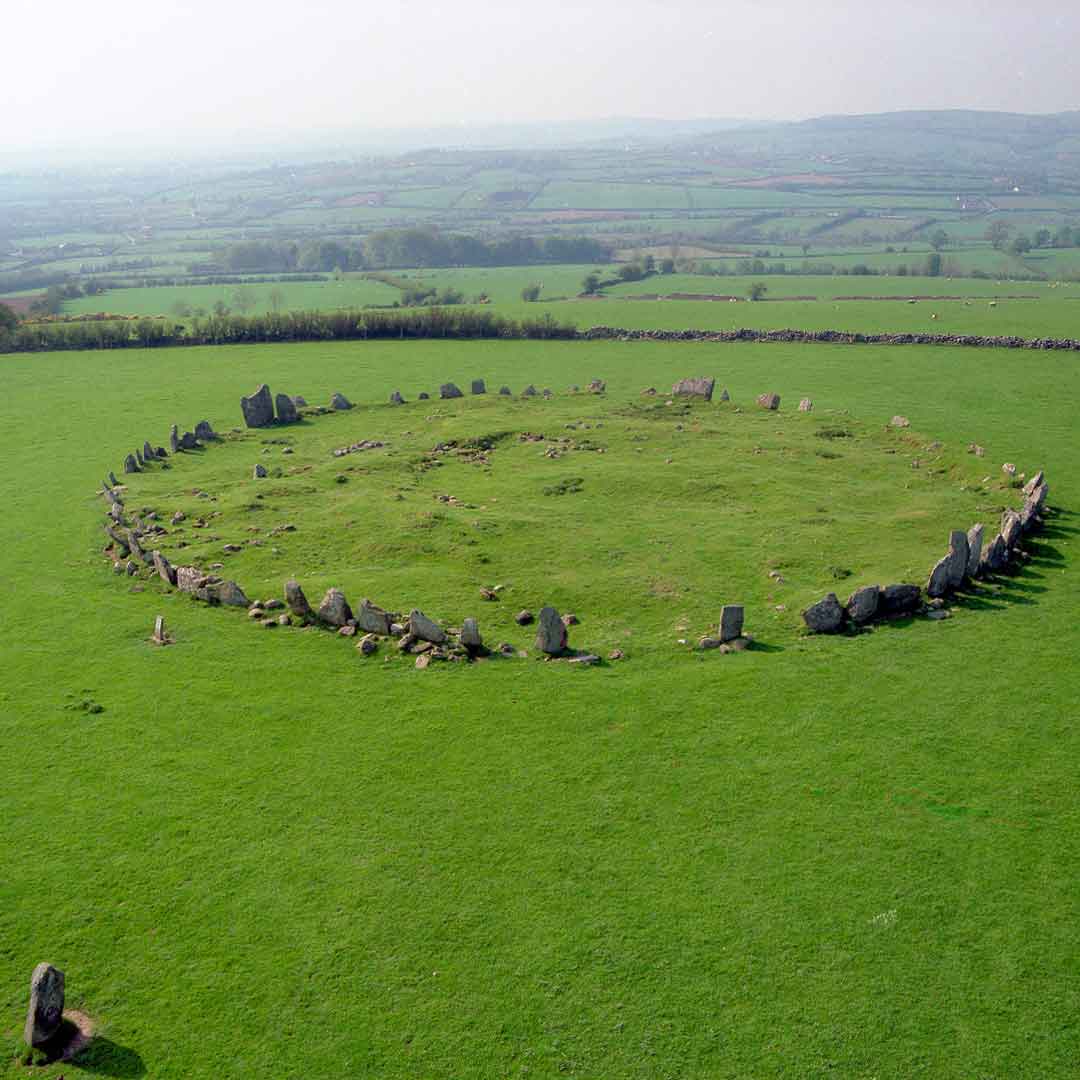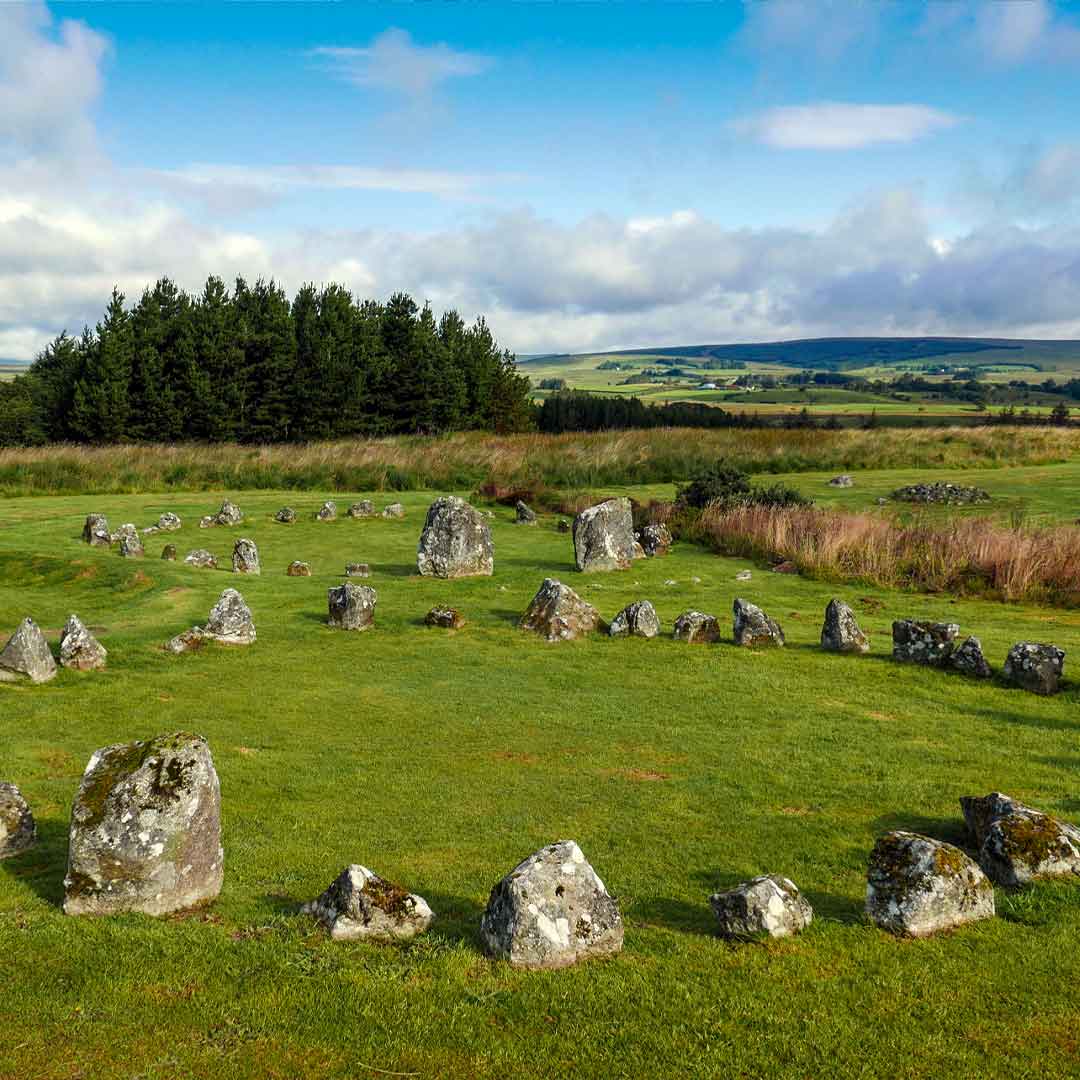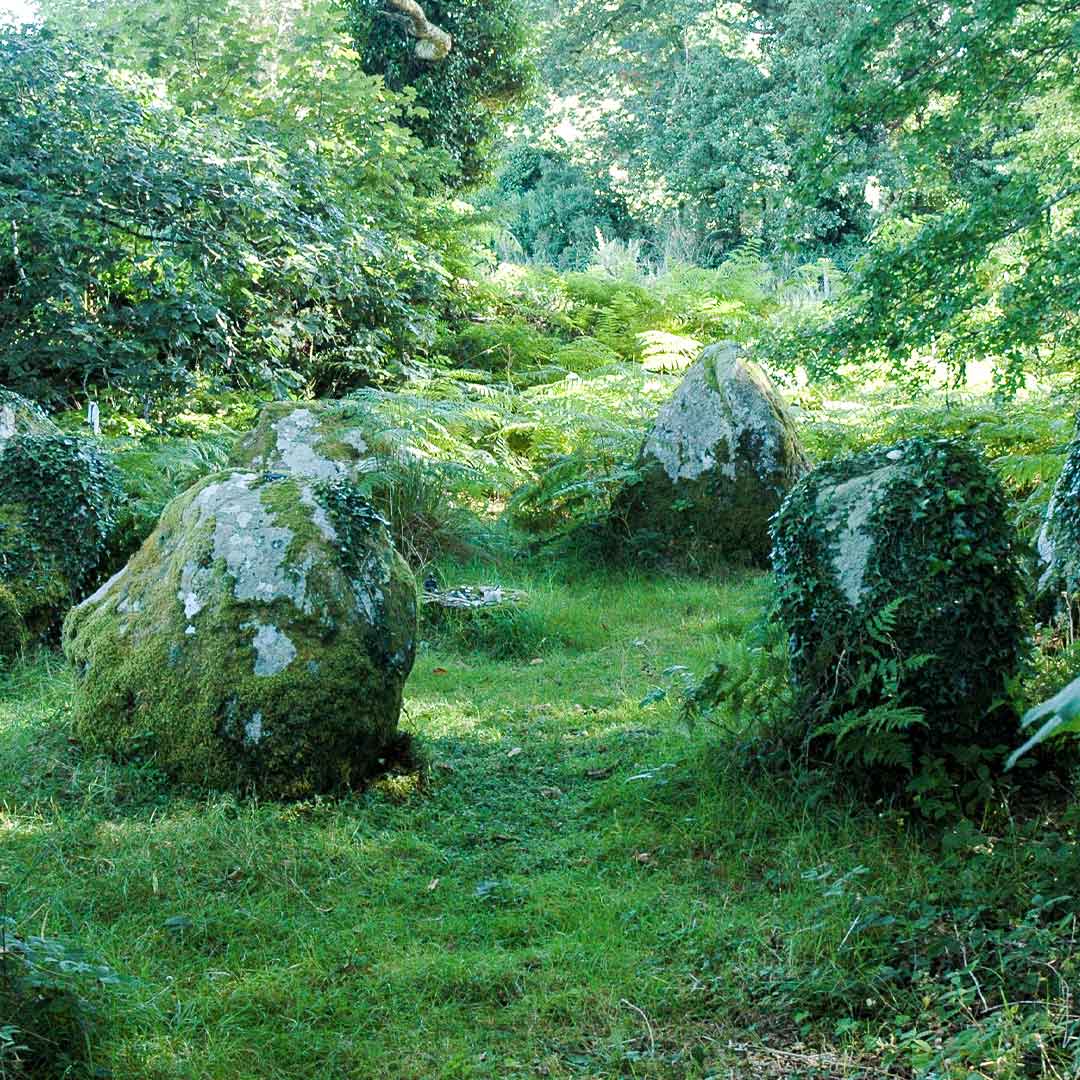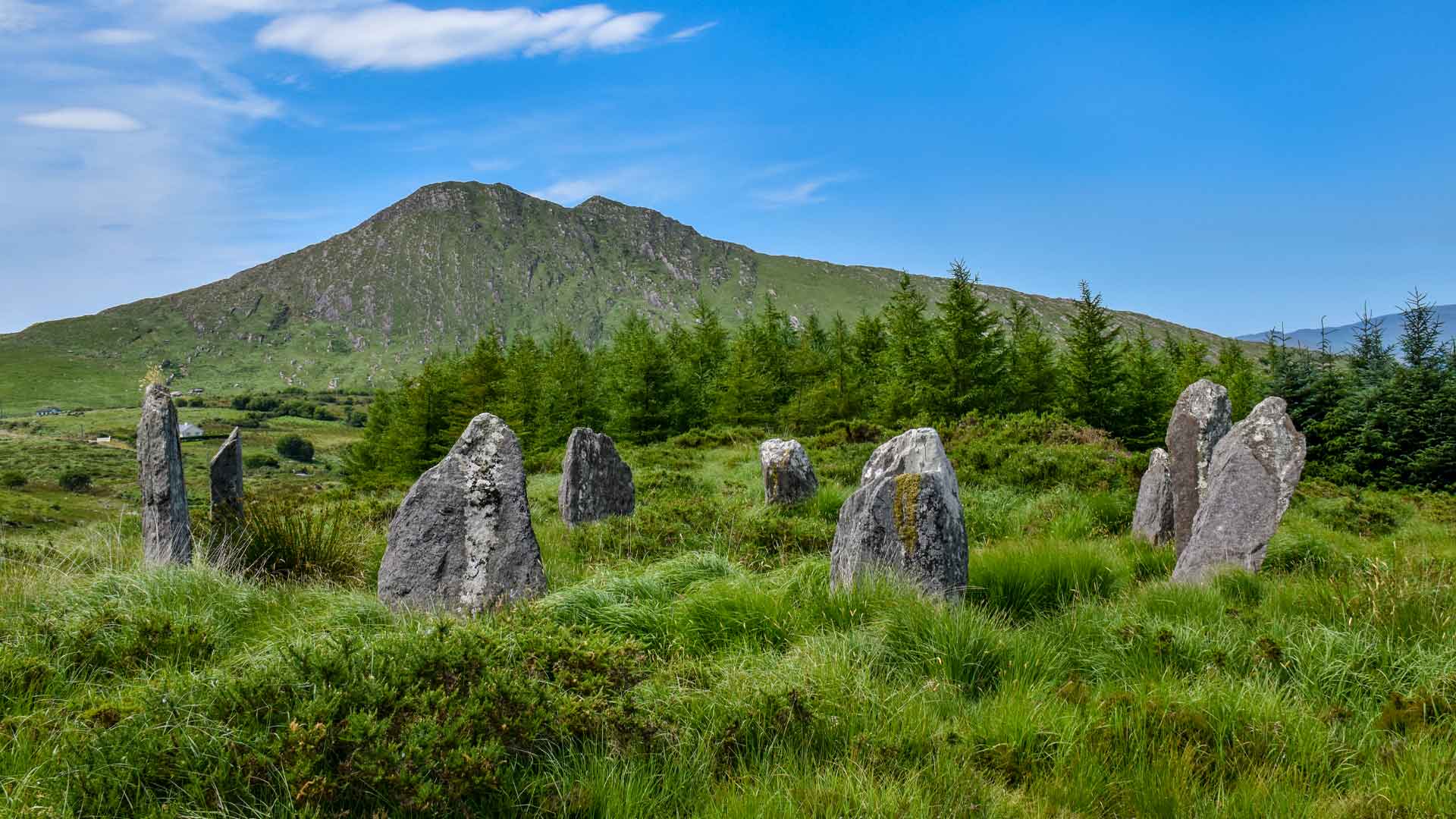
Stone Circles
Stone Circles are the quintessential monument of the Bronze Age and perhaps the most iconic of all the megaliths. Whereas the earlier megalithic “tombs” internalised the sacred space, closing it off from the outside world; stone circles opened rituals up to the elements, emphasising the relationship of the monument with its surrounding landscape.
There are well over 300 stone circles, widely distributed around the island of Ireland. They are usually found in the mountainous regions nearer the coast rather than the flatter central plain.
While most authorities agree that they were a form of astronomical observatory, it is clear that their function goes beyond the practical measuring of time, into the spiritual realm of ritual and ceremony. The stone circle’s apparent simplicity of design - a circle of upright stones - hints at a variety of possible functions.
Perhaps that is the point of stone circles, they are a multi-purpose ritual monument performing many of the roles that their neolithic predecessors did; without the huge community effort required for their construction… Minimalist & multifunctional, they are the IKEA of ancient monuments.
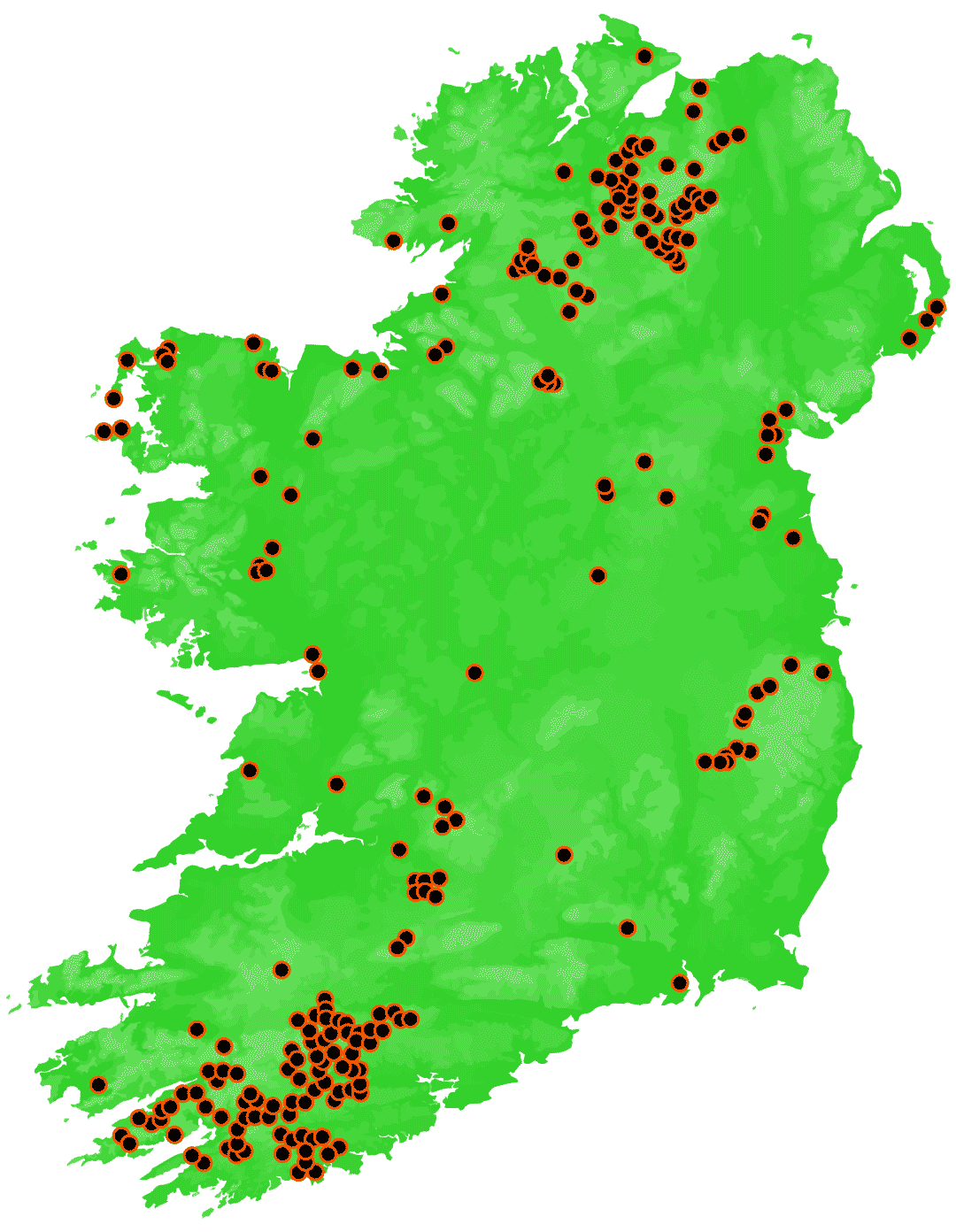
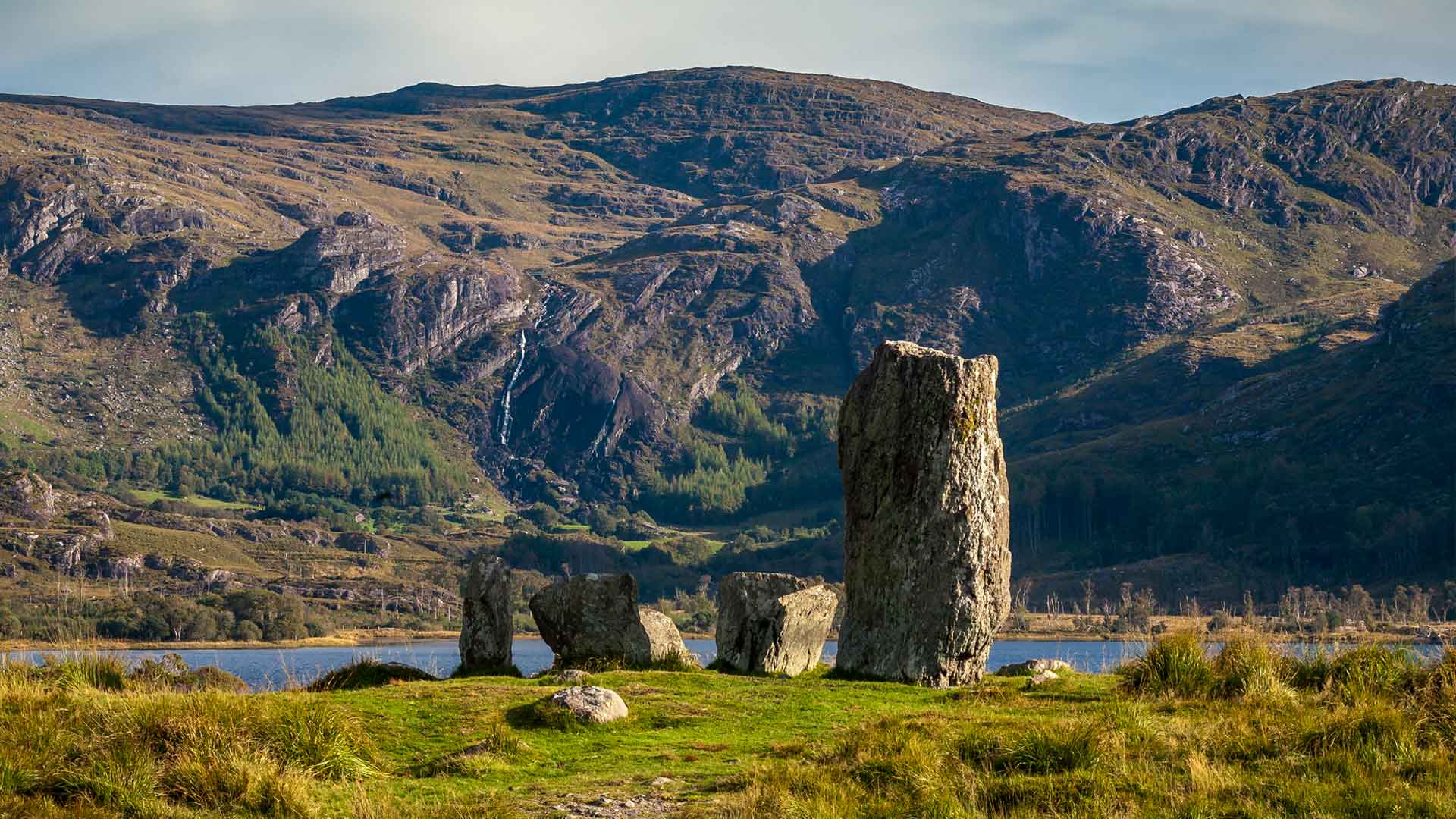
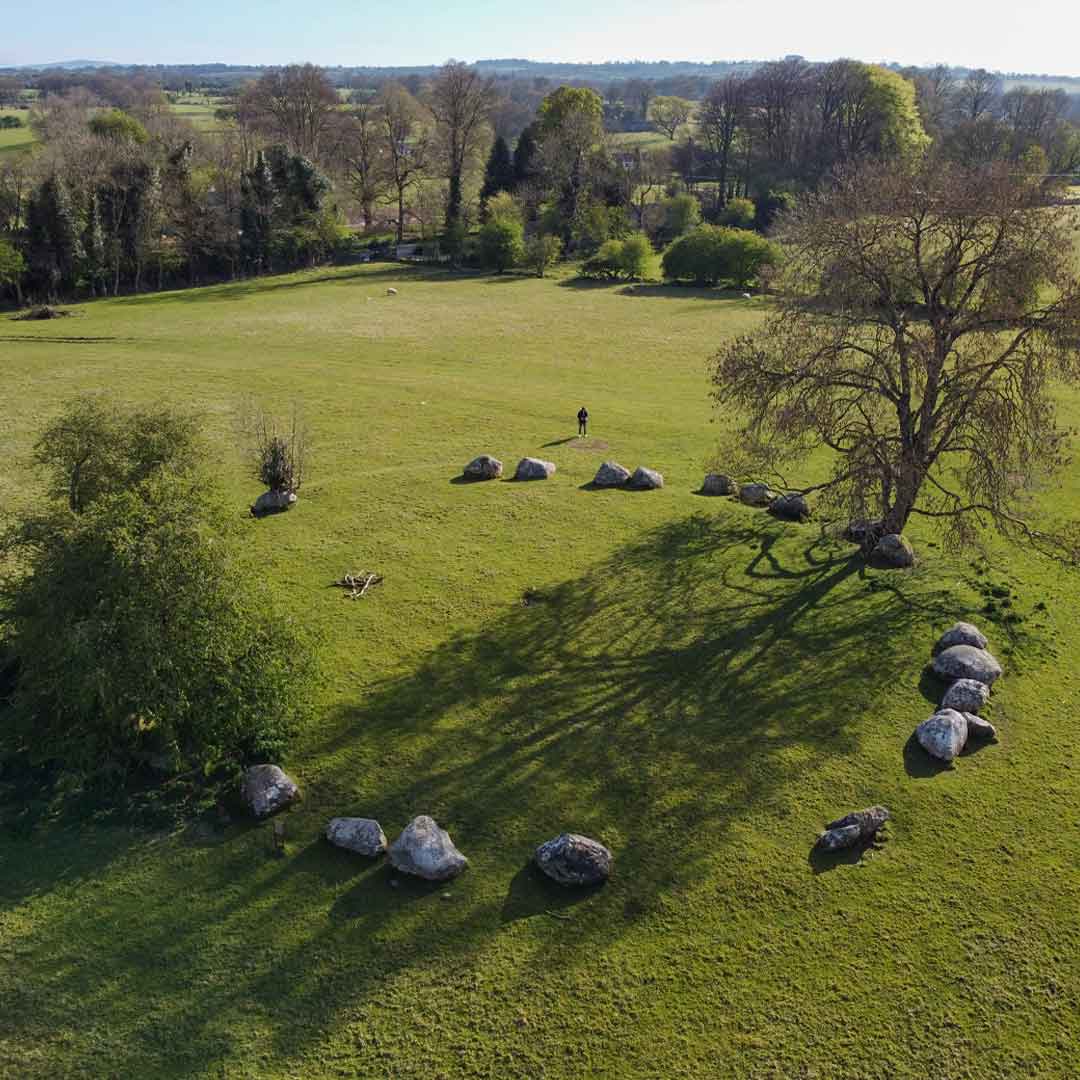
Stone Circles appear across northwestern Europe (particularly in Ireland and Britain) during the Bronze Age and their consistency of design could indicate a homogenisation of monumental construction if not ritual practices. Their main period of construction (c.1800-700 BC) coincides with a period of economic and cultural exchange along the Atlantic seaboard from western Iberia and France to Britain and Ireland known as the Atlantic Bronze Age.
As with the earlier megaliths, human remains have occasionally been found at stone circles. However these tend to be single deposits, perhaps made when the circles were first constructed. The lack of repeat burials suggest that they were not funerary monuments; although these primary internments could suggest some kind of ancestral veneration. Most Irish Stone Circles are orientated roughly southwest, with the sunset during winter months; a time & orientation often symbolically associated with death & the dead.
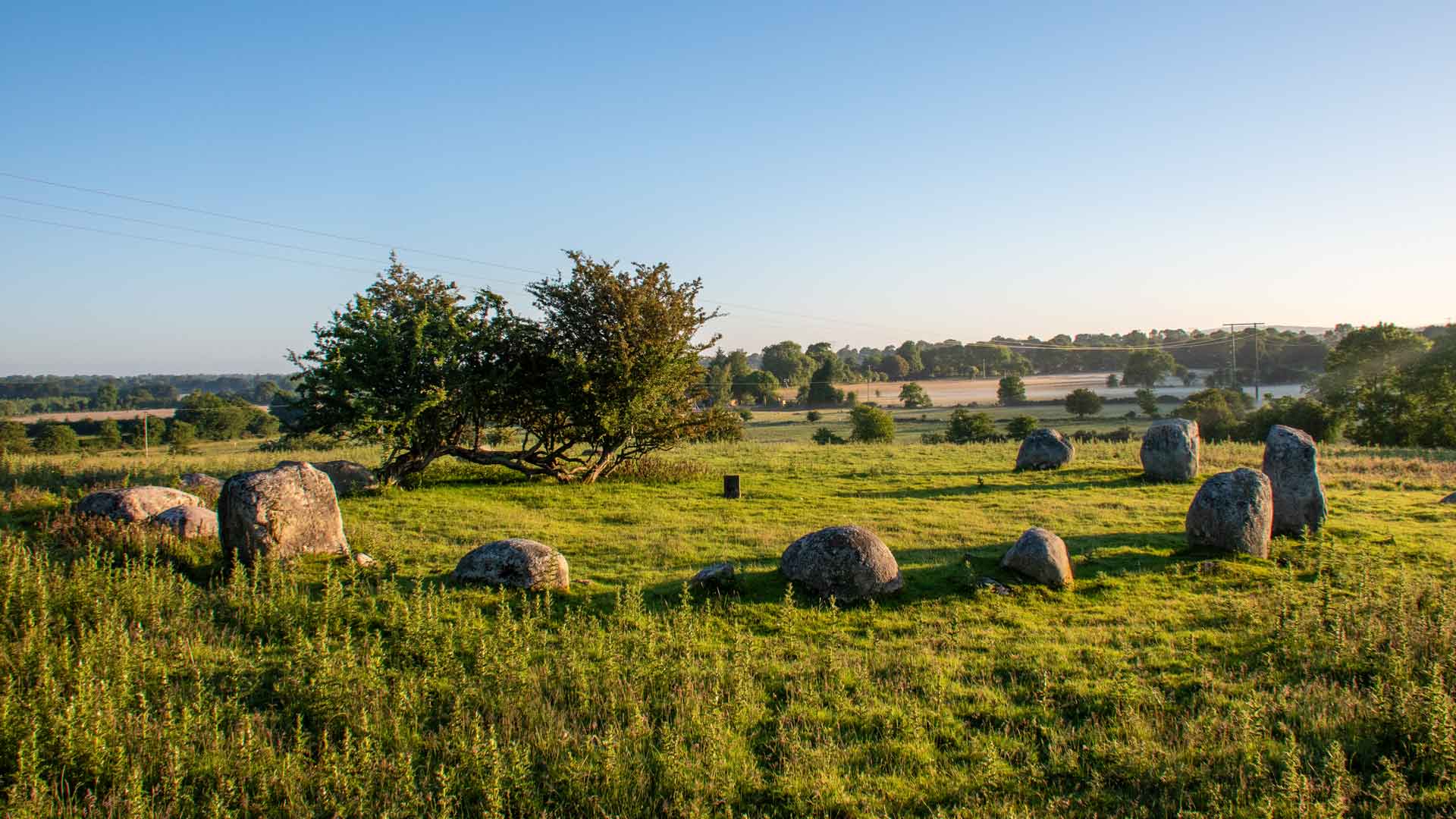
Despite being primarily a Bronze Age monument the minimal simplicity of stone circle design does have precedence in earlier circular monuments such as passage tombs and henges. The earliest passage tombs found at the Carrowmore complex in Co. Sligo, consist of just simple rings of stone surrounding uncovered burial chambers.
There are indications that a few Irish stone circles have their origin in the Late Neolithic (c. 3000-2500 BC); such as the Ballynoe circle in Co. Down which underwent a number of building phases, beginning in the late Neolithic and continuing into the Early Bronze Age. It is thought that Beltany Stone Circle, the second largest in Ireland, may also be a re-purposed passage tomb with only its kerbstones remaining.
Even the great passage tomb of Newgrange, is surrounded by a stone circle, probably the biggest in Ireland with a diameter of 104 meters. Constructed a few centuries after the passage tomb itself, only 12 stones remain out of a possible 36. This huge stone circle was likely the last monumental construction at Newgrange before the cairn collapsed sometime before the end of the Neolithic (c.2500 BCE).
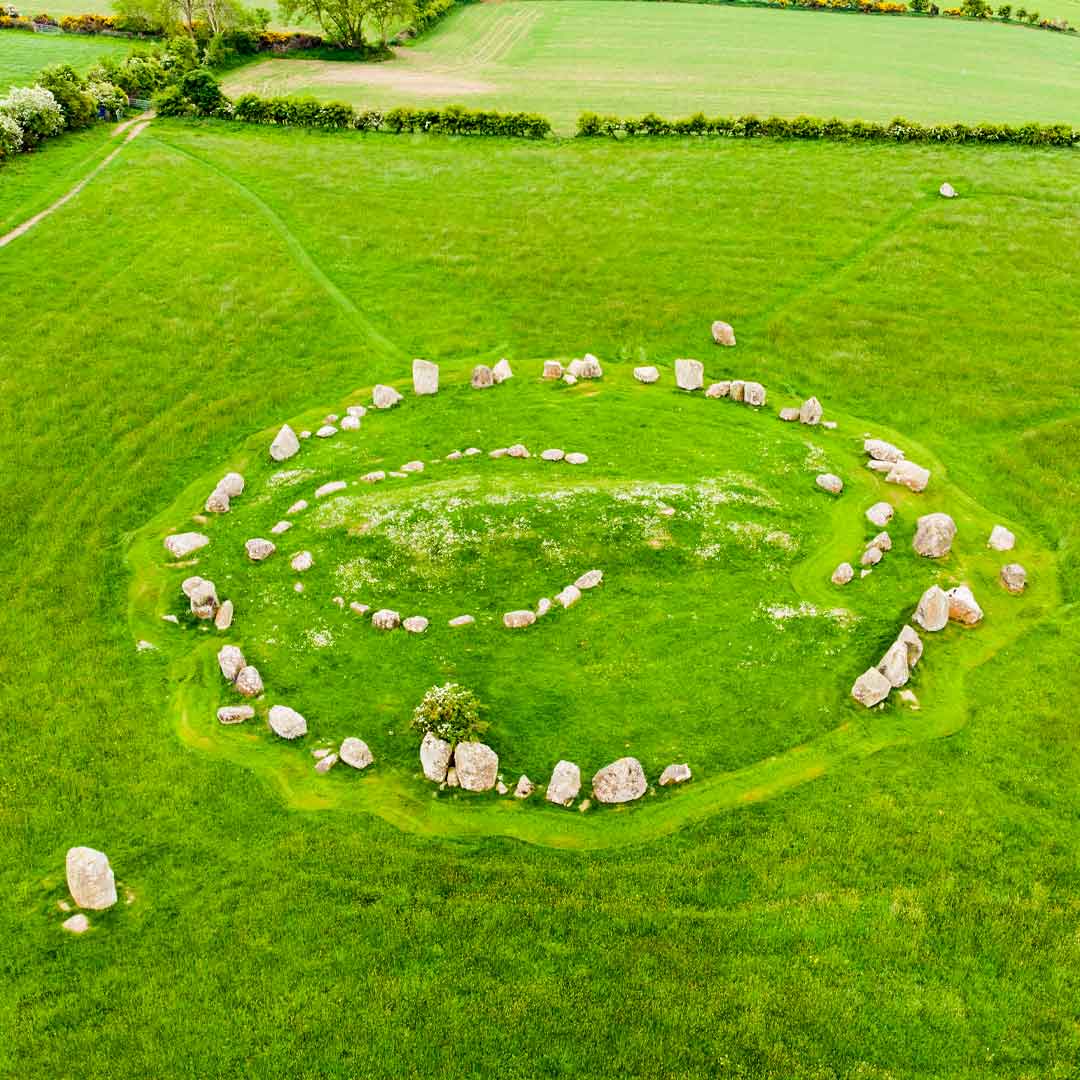
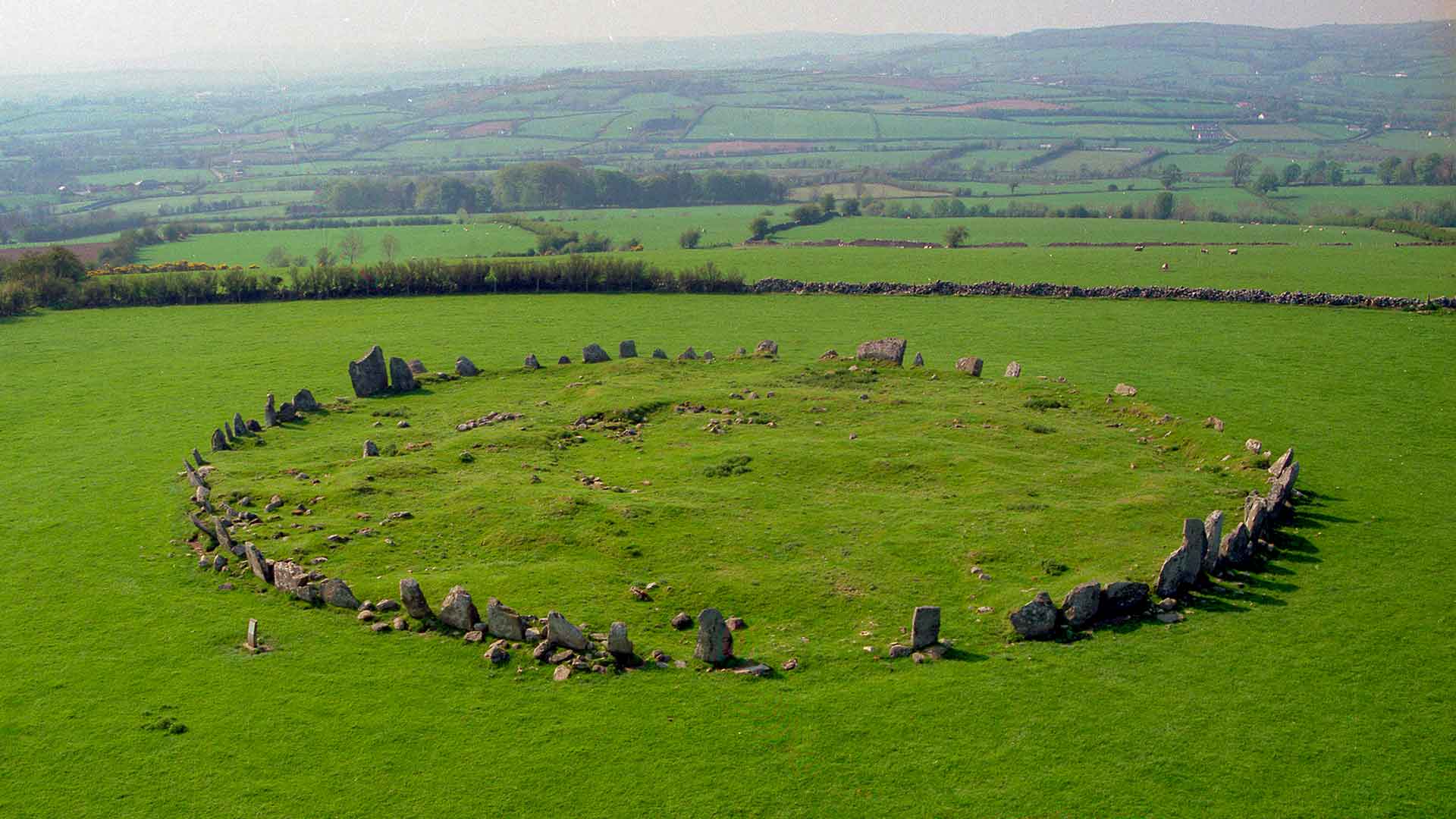
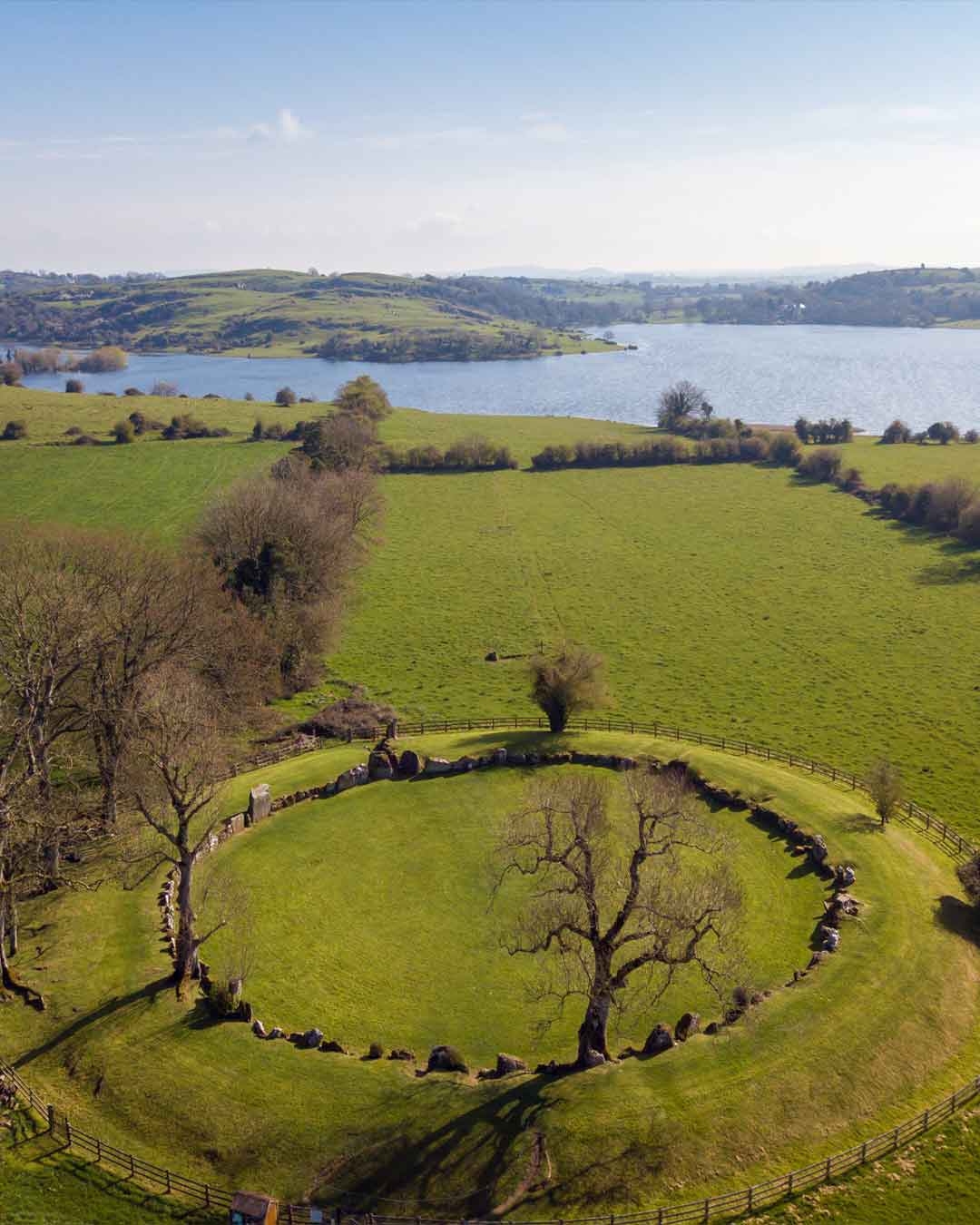
Thought to be some of the earliest stone circles to be constructed in Ireland; Embanked Stone Circles are characterised by a large earthen bank (henge) into which the stones are set. The best-known of these monuments is Ireland’s largest Stone Circle, Grange Lios in Co. Limerick, where the great earthen bank is lined internally by contiguous stones. These Embanked Stone Circles could mark a transition between the henge monuments of the Neolithic and the stone circles of the later Bronze-Age; perhaps indicating a similar functionality or ritual significance.
While Embanked Stone Circles are quite rare in Ireland with only a few confirmed examples; even rarer is the Circle Henge - so rare that we don’t actually have any… not officially anyway. Circle Henges are defined by having a circle of stones standing independently inside the henge as distinct from Embanked Circles where the stones are set into the bank. Although it is classed as an Embanked Stone Circle, the beautiful Lissyvigeen circle near Killarney in Co. Kerry is possibly Ireland’s only Circle Henge as the near perfect 7-stone circle sits well inside its surrounding bank.
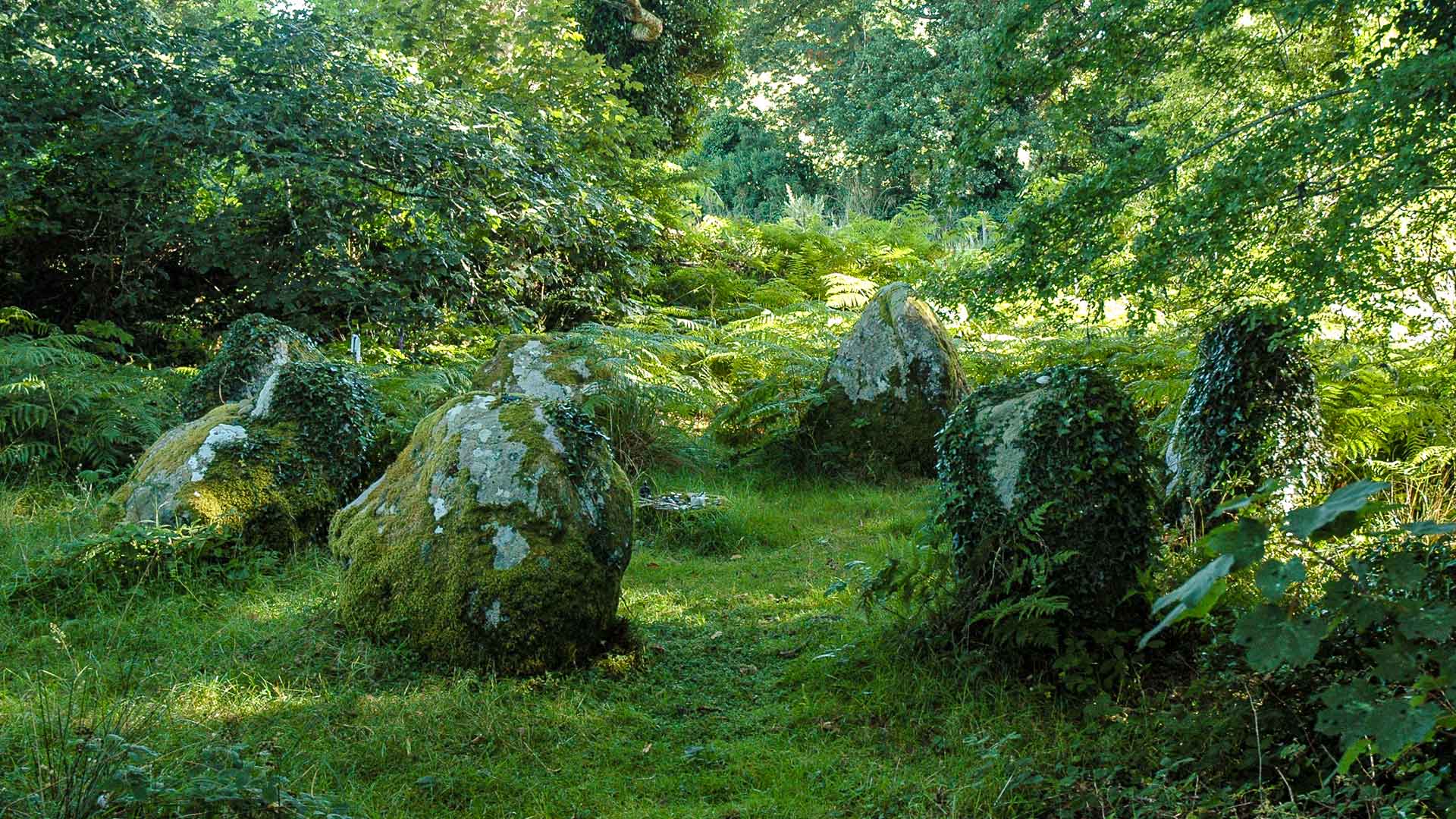
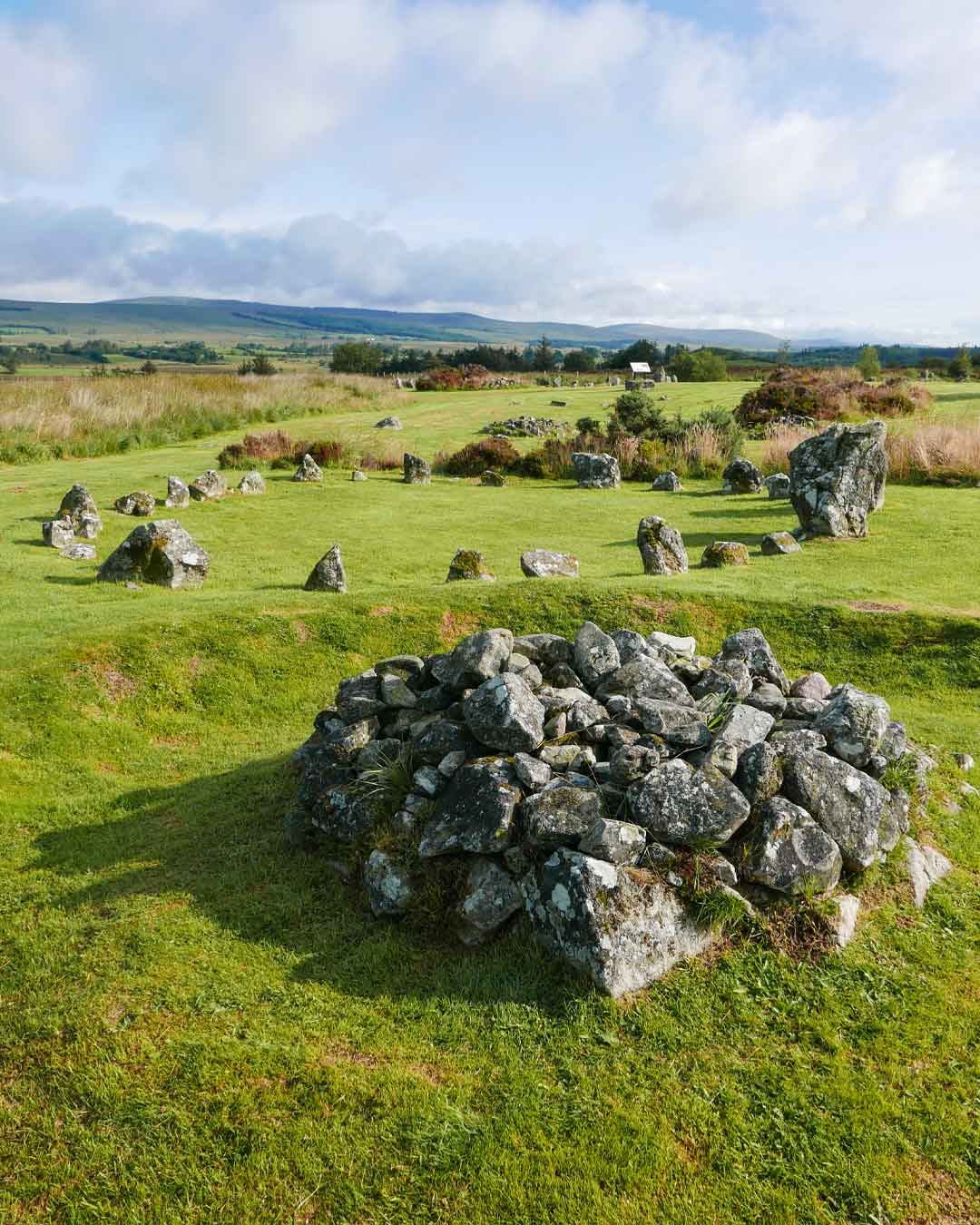
Although stone circles are quite widely distributed around Ireland there are two main concentrations…
The Mid Ulster Group. Found across the Sperrin Mts in counties Tyrone, Fermanagh & Derry; the mid Ulster group of over 100 stone circles are thought to be some of the oldest in the country. They are often found in complex clusters of up to 9 circles accompanied by long stone rows. The circles themselves are nearly always composed of a large number (up to 40) of small stones, less than half a metre in height. The most well known of these clusters is Beaghmore, near Cookstown in County Tyrone which consists of 7 circles, 10 stone rows & a dozen cairns that have been beautifully preserved by the peat bog.
The Cork-Kerry Group. Known as Axial Stone Circles, the Cork/Kerry Group make up nearly half of all the stone circles in Ireland. They are characterised by an uneven number (5-19) of stones which decrease in height from the two tallest entrance stones to the ‘axial’ stone on the opposite side of the circle. The axial stone is almost always found at the southwest of the circle and is often lying flat rather than standing. Unlike the Ulster group these circles are rarely found in clusters, though they are associated with several other monument types; such as Standing Stones, Rows/Pairs and Radial Cairns, which are often found in close proximity to the circles. The larger circles with 7-19 stones are known as multiple stone circles and those with just five are known as 5-stone circles.
Check out the examples of Stone Circles below or click here to view all
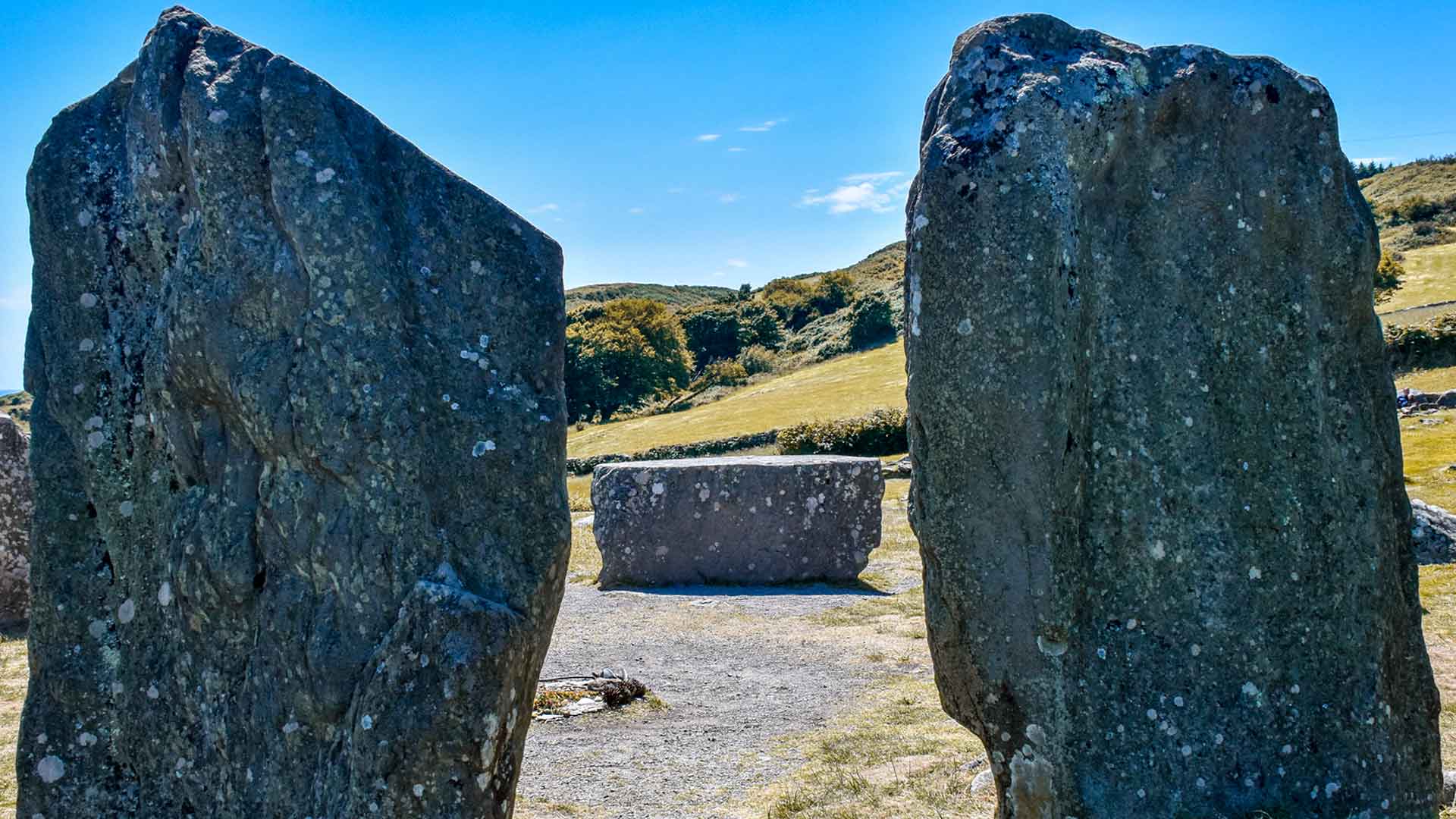
Examples of Stone Circles

Stone Circles
Stone Circles are the quintessential monument of the Bronze Age and perhaps the most iconic of all the megaliths. Whereas the earlier megalithic “tombs” internalised the sacred space, closing it off from the outside world; stone circles opened rituals up to the elements, emphasising the relationship of the monument with its surrounding landscape.
There are well over 300 stone circles, widely distributed around the island of Ireland. They are usually found in the mountainous regions nearer the coast rather than the flatter central plain.
While most authorities agree that they were a form of astronomical observatory, it is clear that their function goes beyond the practical measuring of time, into the spiritual realm of ritual and ceremony. The stone circle’s apparent simplicity of design - a circle of upright stones - hints at a variety of possible functions.
Perhaps that is the point of stone circles, they are a multi-purpose ritual monument performing many of the roles that their neolithic predecessors did; without the huge community effort required for their construction… Minimalist & multifunctional, they are the IKEA of ancient monuments.



Stone Circles appear across northwestern Europe (particularly in Ireland and Britain) during the Bronze Age and their consistency of design could indicate a homogenisation of monumental construction if not ritual practices. Their main period of construction (c.1800-700 BC) coincides with a period of economic and cultural exchange along the Atlantic seaboard from western Iberia and France to Britain and Ireland known as the Atlantic Bronze Age.
As with the earlier megaliths, human remains have occasionally been found at stone circles. However these tend to be single deposits, perhaps made when the circles were first constructed. The lack of repeat burials suggest that they were not funerary monuments; although these primary internments could suggest some kind of ancestral veneration. Most Irish Stone Circles are orientated roughly southwest, with the sunset during winter months; a time & orientation often symbolically associated with death & the dead.

Despite being primarily a Bronze Age monument the minimal simplicity of stone circle design does have precedence in earlier circular monuments such as passage tombs and henges. The earliest passage tombs found at the Carrowmore complex in Co. Sligo, consist of just simple rings of stone surrounding uncovered burial chambers.
There are indications that a few Irish stone circles have their origin in the Late Neolithic (c. 3000-2500 BC); such as the Ballynoe circle in Co. Down which underwent a number of building phases, beginning in the late Neolithic and continuing into the Early Bronze Age. It is thought that Beltany Stone Circle, the second largest in Ireland, may also be a re-purposed passage tomb with only its kerbstones remaining.
Even the great passage tomb of Newgrange, is surrounded by a stone circle, probably the biggest in Ireland with a diameter of 104 meters. Constructed a few centuries after the passage tomb itself, only 12 stones remain out of a possible 36. This huge stone circle was likely the last monumental construction at Newgrange before the cairn collapsed sometime before the end of the Neolithic (c.2500 BCE).



Thought to be some of the earliest stone circles to be constructed in Ireland; Embanked Stone Circles are characterised by a large earthen bank (henge) into which the stones are set. The best-known of these monuments is Ireland’s largest Stone Circle, Grange Lios in Co. Limerick, where the great earthen bank is lined internally by contiguous stones. These Embanked Stone Circles could mark a transition between the henge monuments of the Neolithic and the stone circles of the later Bronze-Age; perhaps indicating a similar functionality or ritual significance.
While Embanked Stone Circles are quite rare in Ireland with only a few confirmed examples; even rarer is the Circle Henge - so rare that we don’t actually have any… not officially anyway. Circle Henges are defined by having a circle of stones standing independently inside the henge as distinct from Embanked Circles where the stones are set into the bank. Although it is classed as an Embanked Stone Circle, the beautiful Lissyvigeen circle near Killarney in Co. Kerry is possibly Ireland’s only Circle Henge as the near perfect 7-stone circle sits well inside its surrounding bank.


Although stone circles are quite widely distributed around Ireland there are two main concentrations…
The Mid Ulster Group. Found across the Sperrin Mts in counties Tyrone, Fermanagh & Derry; the mid Ulster group of over 100 stone circles are thought to be some of the oldest in the country. They are often found in complex clusters of up to 9 circles accompanied by long stone rows. The circles themselves are nearly always composed of a large number (up to 40) of small stones, less than half a metre in height. The most well known of these clusters is Beaghmore, near Cookstown in County Tyrone which consists of 7 circles, 10 stone rows & a dozen cairns that have been beautifully preserved by the peat bog.
The Cork-Kerry Group. Known as Axial Stone Circles, the Cork/Kerry Group make up nearly half of all the stone circles in Ireland. They are characterised by an uneven number (5-19) of stones which decrease in height from the two tallest entrance stones to the ‘axial’ stone on the opposite side of the circle. The axial stone is almost always found at the southwest of the circle and is often lying flat rather than standing. Unlike the Ulster group these circles are rarely found in clusters, though they are associated with several other monument types; such as Standing Stones, Rows/Pairs and Radial Cairns, which are often found in close proximity to the circles. The larger circles with 7-19 stones are known as multiple stone circles and those with just five are known as 5-stone circles.
Check out the examples of Stone Circles below or click here to view all

Examples of Stone Circles

Stone Circles
Stone Circles are the quintessential monument of the Bronze Age and perhaps the most iconic of all the megaliths. Whereas the earlier megalithic “tombs” internalised the sacred space, closing it off from the outside world; stone circles opened rituals up to the elements, emphasising the relationship of the monument with its surrounding landscape.
There are well over 300 stone circles, widely distributed around the island of Ireland. They are usually found in the mountainous regions near the coast rather than the flatter central plain.
While most authorities agree that they were a form of astronomical observatory, it is clear that their function goes beyond the practical measuring of time, into the spiritual realm of ritual and ceremony. The stone circle’s apparent simplicity of design - a circle of upright stones - hints at a variety of possible functions.
Perhaps that is the point of stone circles, they are a multi-purpose ritual monument performing many of the roles that their neolithic predecessors did; without the huge community effort required for their construction… Minimalist & multifunctional, they are the IKEA of ancient monuments.


Stone Circles appear across northwestern Europe (particularly in Ireland and Britain) during the Bronze Age and their consistency of design could indicate a homogenisation of monumental construction if not ritual practices. Their main period of construction (c.1800-700 BC) coincides with a period of economic and cultural exchange along the Atlantic seaboard from western Iberia and France to Britain and Ireland known as the Atlantic Bronze Age.
As with the earlier megaliths, human remains have occasionally been found at stone circles. However these tend to be single deposits, perhaps made when the circles were first constructed. The lack of repeat burials suggest that they were not funerary monuments; although these primary internments could suggest some kind of ancestral veneration. Most Irish Stone Circles are orientated roughly southwest, with the sunset during winter months; a time & orientation often symbolically associated with death & the dead.


Despite being primarily a Bronze Age monument the minimal simplicity of stone circle design does have precedence in earlier circular monuments such as passage tombs and henges. The earliest passage tombs found at the Carrowmore complex in Co. Sligo, consist of just simple rings of stone surrounding uncovered burial chambers.
There are indications that a few Irish stone circles have their origin in the Late Neolithic (c.3000-2500 BC); such as the Ballynoe circle in Co. Down which underwent a number of building phases, beginning in the late Neolithic and continuing into the Early Bronze Age. It is thought that Beltany Stone Circle, the second largest in Ireland, may also be a re-purposed passage tomb with only its kerbstones remaining.
Even the great passage tomb of Newgrange, is surrounded by a stone circle, probably the biggest in Ireland with a diameter of 104 meters. Constructed a few centuries after the passage tomb itself, only 12 stones remain out of a possible 36. This huge stone circle was likely the last monumental construction at Newgrange before the cairn collapsed sometime before the end of the Neolithic (c.2500 BCE).


Thought to be some of the earliest stone circles to be constructed in Ireland; Embanked Stone Circles are characterised by a large earthen bank (henge) into which the stones are set. The best-known of these monuments is Ireland’s largest Stone Circle, Grange Lios in Co. Limerick, where the great earthen bank is lined internally by contiguous stones. These Embanked Stone Circles could mark a transition between the henge monuments of the Neolithic and the stone circles of the later Bronze-Age; perhaps indicating a similar functionality or ritual significance.
While Embanked Stone Circles are quite rare in Ireland with only a few confirmed examples; even rarer is the Circle Henge - so rare that we don’t actually have any… not officially anyway. Circle Henges are defined by having a circle of stones standing independently inside the henge as distinct from Embanked Circles where the stones are set into the bank. Although it is classed as an Embanked Stone Circle, the beautiful Lissyvigeen circle near Killarney in Co. Kerry is possibly Ireland’s only Circle Henge as the near perfect 7-stone circle sits well inside its surrounding bank.


Although stone circles are quite widely distributed around Ireland there are two main concentrations…
The Mid Ulster Group. Found across the Sperrin Mts in counties Tyrone, Fermanagh & Derry; the mid Ulster group of over 100 stone circles are thought to be some of the oldest in the country. They are often found in complex clusters of up to 9 circles accompanied by long stone rows. The circles themselves are nearly always composed of a large number (up to 40) of small stones, less than half a metre in height. The most well known of these clusters is Beaghmore, near Cookstown in County Tyrone which consists of 7 circles, 10 stone rows & a dozen cairns that have been beautifully preserved by the peat bog.
The Cork-Kerry Group. Known as Axial Stone Circles, the Cork/Kerry Group make up nearly half of all the stone circles in Ireland. They are characterised by an uneven number (5-19) of stones which decrease in height from the two tallest entrance stones to the ‘axial’ stone on the opposite side of the circle. The axial stone is almost always found at the southwest of the circle and is often lying flat rather than standing. Unlike the Ulster group these circles are rarely found in clusters, though they are associated with several other monument types; such as Standing Stones, Rows/Pairs and Radial Cairns, which are often found in close proximity to the circles. The larger circles with 7-19 stones are known as multiple stone circles and those with just five are known as 5-stone circles.
Check out the examples of Stone Circles below or click here to view all



